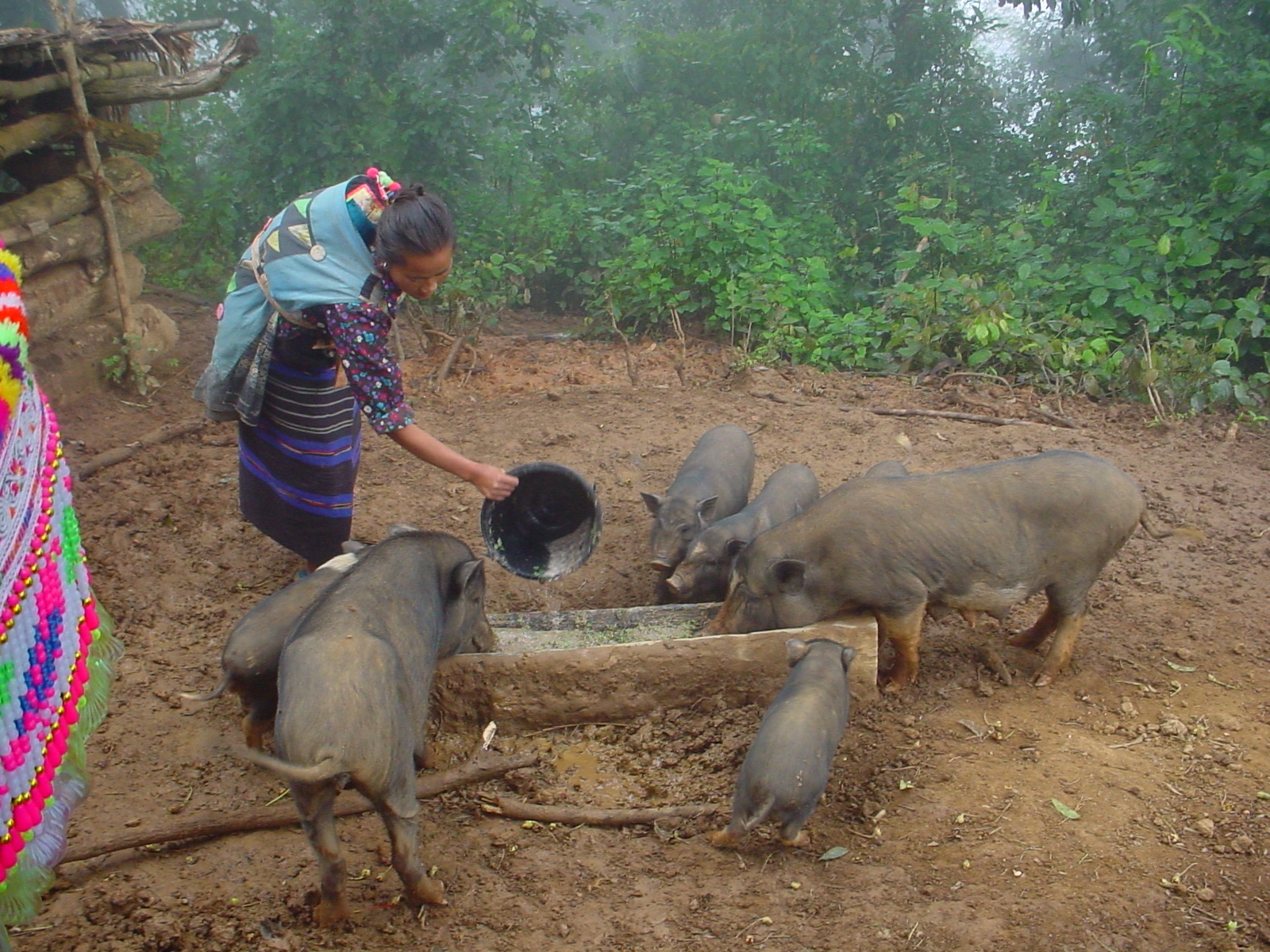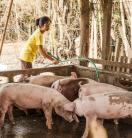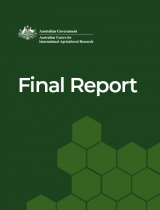Human health and pig productivity under the microscope
A transdisciplinary approach to public health will drive a new ACIAR project to tackle a significant threat to human health and pig production in Laos.
The project will work to lower the incidence of the parasite Taenia solium, commonly known as pork tapeworm, in humans and livestock by reducing the transmission of the parasite between pigs and smallholder farmers.
T. solium is the leading cause of late onset epilepsy in humans in countries with the parasite. In Laos, the parasite is endemic, and many rural communities are at risk. The parasite also contributes to higher rates of pig deaths, damaging local livestock businesses.
The World Health Organization defines T. solium as a Neglected Tropical Disease, earmarked for urgent control or eradication.
It’s also the number one foodborne parasitic disease globally, according to the Food and Agriculture Organization of the United Nations.
The project was recently co-launched by Dr Sourioudong Sundara, Vice Minister for the Lao Ministry of Education and Sports, and Dr Sanong Thongsana, Vice Minister for the Lao Ministry of Health. The latter cited how poor sanitation practices and eating raw or undercooked pork are linked to Laos’ high rate of foodborne parasitic diseases.
ACIAR Livestock Systems Research Program Manager Dr Anna Okello knows firsthand how pork tapeworm can affect human and pig health, having worked in Laos on a precursor project to control this parasite.
‘As part of the intervention to control the disease, there was a worming treatment for people and pigs,’ Dr Okello said.
‘The humans were feeling better, and the pigs were growing better and there were less pre-weaning deaths. There were more pigs available for farmers to trade and use for ceremonial purposes, income went up by hundreds of dollars in some households.’
The new project will expand on previous work by finding an easier way to identify the areas at high risk of pork tapeworm infection.
Project leader and Murdoch University Parasitology Lecturer Dr Amanda Ash said combining risk factors with population data to find infected regions is a first.
‘There are known risk factors, such as people who don’t have toilets and areas contaminated with human faeces, areas where free-range pigs are kept and generally where various cultural practices involve eating raw pork,’ Dr Ash said.
‘We will put these risk factors together and overlay them with census data in Laos and then go into the identified villages and do biological sampling to either confirm or deny our risk rating.
‘If it works, we might have this non-biological identification method that can be done on a country-wide scale and will help the Lao Government target intervention strategies.’
Vice Minister Dr Sundara referred to the importance of the “One Health” approach, which integrates human, livestock, and environment health strategies.
The project will promote behaviour changes for sustained health and economic improvements by adopting a “One Health” approach.
‘A large part of the project will also involve human anthropologists, to put together programs and activities promoting behaviour change,’ Dr Ash said.
‘It has to be intensive, comprehensive, and practical to encourage other ways to do what they do without eating raw pork while promoting the use of toilets and penning pigs.
‘Drugs may control the disease but unless there’s behaviour change, we don’t have change on a long-term basis. That’s the challenge.’
The project is funded through the ACIAR Livestock Systems Research Program and is scheduled to run until December 2023. Learn more via the ACIAR website.





